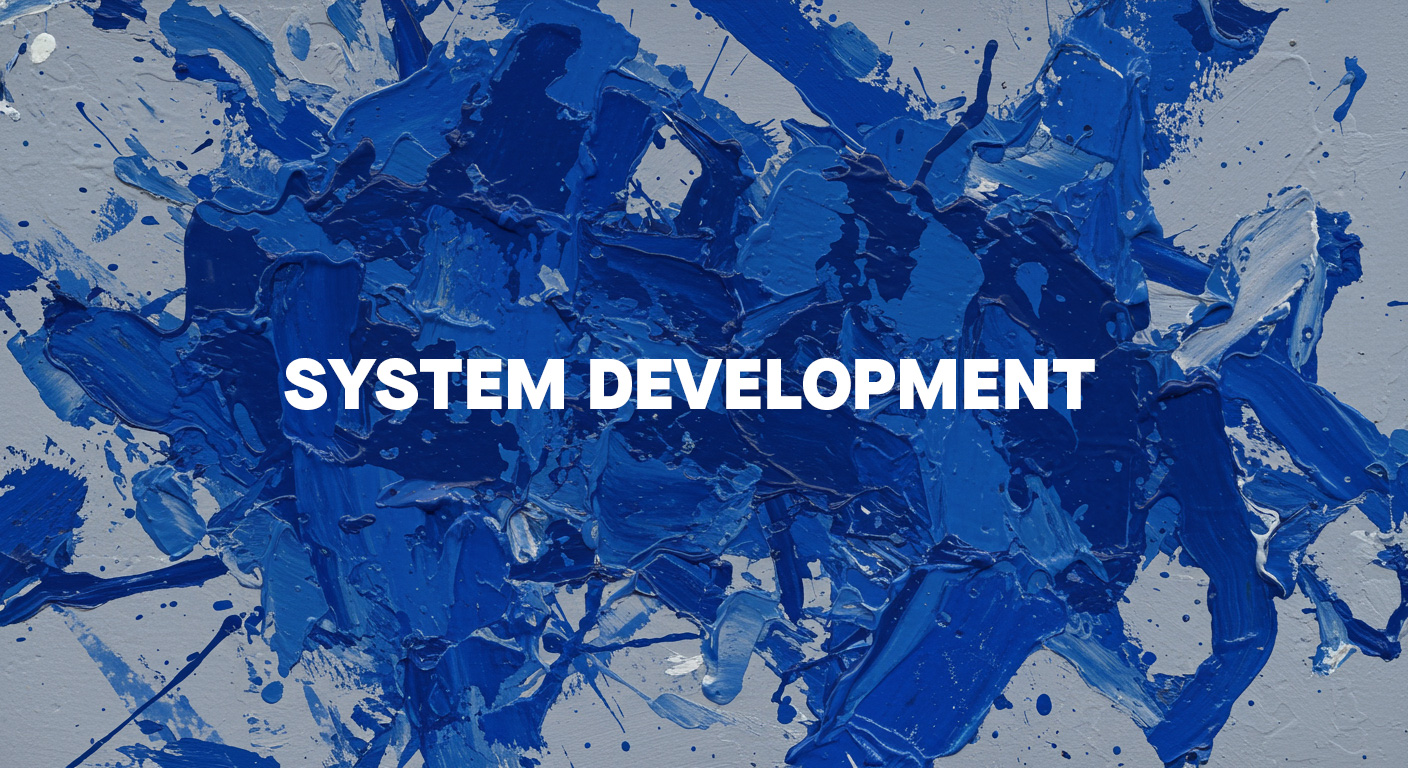cms移管の指標と読み解き方|判断を誤らないコツ

HTTP Archiveの公開データでは、モバイルのCore Web Vitals合格率は40%台にとどまり[1]、Web全体のJavaScript容量は右肩上がりです[2]。世界の約4割を占めるWordPressを含め[3]、CMSは強力ですが、移管の判断と実行を誤るとパフォーマンス劣化や運用コスト増に直結します。本稿は、CMS移管を「勘」ではなく指標で意思決定するために、技術・運用・ビジネスの観点を統合し、計測セットアップから実装、ベンチマーク、ROI評価までを一気通貫で整理します。
課題定義と指標体系:何を測れば誤らないか
移管の是非は、機能比較より「継続的に測れる指標」で判断します。以下の4軸でKPI/KRを定義し、移管前後で差分を読み解きます。
パフォーマンス指標(ユーザー体験と配信効率)
Core Web Vitalsを基軸に、配信系を補助指標として設定します。
- LCP(Largest Contentful Paint):2.5s以下を目標[4]。CDNキャッシュ率、画像最適化(AVIF/WebP)、TTFBとの因果を併記。
- INP(Interaction to Next Paint):200ms以下を目標[5]。JS分割、優先度ヒント(preload/priority)、サードパーティ抑制。
- CLS(Cumulative Layout Shift):0.1以下[6]。画像のwidth/height、フォント表示戦略。
- TTFB・RPS・p95/99レイテンシ:配信基盤とレンダリング戦略(SSR/ISR/静的化)の整合性を確認。
運用コスト指標(TCOの見える化)
人件費とプラットフォーム費を分離して評価します。
- 月次運用時間(h/月):コンテンツ公開、権限管理、差分デプロイ、障害対応。
- プラットフォーム費($または円/月):CMSライセンス、CDN、画像最適化、ログ/監視。
- 変更リードタイム(構成変更の平均所要時間)。
開発生産性指標(変更容易性)
- 変更リードタイム(コード→本番)。
- デプロイ頻度(回/週)。
- 変更失敗率(ロールバック割合)。
- ビルド時間、CMSスキーマ変更の影響半径(影響ページ数)。
リスク指標(可用性・セキュリティ)
- 可用性(SLO、エラー率)。
- 権限分離(RBAC/ABAC対応、監査ログ可視性)。
- ベンダーロックイン度(エクスポートAPIの網羅性)。
前提条件・環境と技術仕様
本稿の実装例は以下の前提で提示します。環境は読み替え可能です。
| 項目 | 仕様 |
|---|---|
| 現行CMS | WordPress 6.x(REST API有効) |
| 移管先 | Headless CMS(例:Contentful/Hygraph/microCMSのいずれか) |
| フロントエンド | Next.js 14(App Router, ISR)/ Node.js 18 |
| 配信 | CDN(Vercel/CloudFront)、画像最適化(Image Optimization) |
| 計測 | Lighthouse CI、Playwright、autocannon |
| 監視 | RUM(例:Web Vitals, GA4)、APM(例:OpenTelemetry) |
実装と計測の手順:移管を定量で進める
以下の手順で「移管前→サンドボックス→本番切替」を進めます。
- 現状診断:URL一覧・CWV・配信ログ・権限・コンテンツモデルを棚卸し。
- エクスポート:APIで全コンテンツを抽出し、リトライ・冪等を確保。
- トランスフォーム:スキーマ差を吸収し、画像・埋め込み・リレーションを正規化。
- インポート:移管先CMSへGraphQL/RESTで投入し、IDマッピングを保持。
- フロント実装:ISR/SSG戦略、画像最適化、データ取得のキャッシュを設計。
- 自動テスト/監査:構文・リンク・リダイレクト・アクセシビリティをチェック。
- ベンチマーク:API/HTML配信の負荷試験、CWVの比較。
- カットオーバーと監視:段階リリース、アラート閾値、ロールバック動線を準備。
コード例1:WordPressから堅牢にエクスポート(Node.js)
import fs from 'node:fs/promises';
import path from 'node:path';
import { setTimeout as sleep } from 'node:timers/promises';
const BASE = 'https://example.com/wp-json/wp/v2/posts';
async function fetchPage(page = 1) {
const url = new URL(BASE);
url.searchParams.set('per_page', '100');
url.searchParams.set('page', String(page));
for (let attempt = 1; attempt <= 4; attempt++) {
try {
const res = await fetch(url, { headers: { 'Accept': 'application/json' } });
if (!res.ok) throw new Error(`HTTP ${res.status}`);
const items = await res.json();
return items;
} catch (e) {
if (attempt === 4) throw e;
await sleep(300 * attempt);
}
}
}
async function exportAll() {
const outDir = path.resolve('./export');
await fs.mkdir(outDir, { recursive: true });
let page = 1, total = 0;
while (true) {
const items = await fetchPage(page);
if (!items || items.length === 0) break;
await fs.writeFile(path.join(outDir, `posts-${page}.json`), JSON.stringify(items, null, 2));
total += items.length; page++;
}
console.log(`Exported ${total} posts.`);
}
exportAll().catch(err => {
console.error('Export failed:', err);
process.exitCode = 1;
});
ポイント:ヘッダ付与、指数バックオフ、冪等な分割保存。API制限に耐える構造です。
コード例2:HTMLをスキーマへ正規化(Python)
import json
import re
from pathlib import Path
from bs4 import BeautifulSoup
INPUT = Path('./export')
OUTPUT = Path('./transformed')
OUTPUT.mkdir(exist_ok=True)
IMG_PATTERN = re.compile(r"<img[^>]+src=\"([^\"]+)\"")
def transform_post(post: dict) -> dict:
soup = BeautifulSoup(post.get('content', {}).get('rendered', ''), 'html.parser')
# 画像URL収集と置換(例:CDNパスへ)
images = []
for img in soup.find_all('img'):
src = img.get('src')
if not src:
continue
images.append(src)
img['loading'] = 'lazy'
return {
'legacyId': post.get('id'),
'slug': post.get('slug'),
'title': post.get('title', {}).get('rendered', ''),
'bodyHtml': str(soup),
'images': images,
'publishedAt': post.get('date')
}
if __name__ == '__main__':
try:
for f in INPUT.glob('posts-*.json'):
data = json.loads(f.read_text())
out = [transform_post(p) for p in data]
(OUTPUT / f.name).write_text(json.dumps(out, ensure_ascii=False, indent=2))
except Exception as e:
print('Transform error:', e)
raise
ポイント:本文HTMLを安全にパースし、lazy-loadingや画像一覧を抽出して以降のCDN移管に備えます。
コード例3:Headless CMSへGraphQLインポート(Node.js)
import { readFile } from 'node:fs/promises';
import path from 'node:path';
import { GraphQLClient, gql } from 'graphql-request';
const client = new GraphQLClient('https://api.example-cms.com/graphql', {
headers: { authorization: `Bearer ${process.env.CMS_TOKEN}` }
});
const MUTATION = gql`
mutation UpsertArticle($input: ArticleUpsertInput!) {
upsertArticle(input: $input) { id slug }
}
`;
async function upsertBatch(file) {
const posts = JSON.parse(await readFile(file, 'utf8'));
for (const p of posts) {
try {
const variables = { input: {
legacyId: String(p.legacyId), slug: p.slug,
title: p.title, bodyHtml: p.bodyHtml,
publishedAt: p.publishedAt
}};
const res = await client.request(MUTATION, variables);
console.log('Upserted', res.upsertArticle.slug);
} catch (e) {
console.error('Upsert failed for', p.slug, e);
}
}
}
const files = process.argv.slice(2);
Promise.all(files.map(f => upsertBatch(path.resolve(f))))
.catch(e => { console.error(e); process.exit(1); });
ポイント:Upsertパターンで冪等化。slugとlegacyIdで一意性を担保します。エラーはスキップし、再実行可能にします。
コード例4:Next.js 14のISRで配信最適化
// app/[slug]/page.tsx
import 'server-only';
import { cache } from 'react';
async function fetchArticle(slug: string) {
const res = await fetch(`${process.env.API_URL}/articles/${slug}`, {
next: { revalidate: 300 }, // 5分で再生成
headers: { 'Accept': 'application/json' }
});
if (!res.ok) throw new Error(`HTTP ${res.status}`);
return res.json();
}
export default async function Page({ params }: { params: { slug: string } }) {
const article = await fetchArticle(params.slug);
return (
<article>
<h1>{article.title}</h1>
<div dangerouslySetInnerHTML={{ __html: article.bodyHtml }} />
</article>
);
}
ポイント:revalidateを用いてTTFBと運用の両立を図ります。ビルド時間を削減し、ホットエントリのみ再生成します。
コード例5:配信ベンチマーク(autocannon)
import autocannon from 'autocannon';
const url = process.argv[2] || 'https://staging.example.com';
const instance = autocannon({
url,
connections: 50,
duration: 20,
headers: { 'User-Agent': 'bench/1.0' }
});
autocannon.track(instance);
instance.on('done', (res) => {
console.log({ rps: res.requests.average, p95: res.latency.p95, p99: res.latency.p99 });
});
ポイント:RPSとp95/p99のレイテンシで配信基盤を比較。キャッシュの有無とSSR/ISRで分けて測定します。
コード例6:LighthouseをCIで数値化(Node.js)
import lighthouse from 'lighthouse';
import chromeLauncher from 'chrome-launcher';
async function run(url) {
const chrome = await chromeLauncher.launch({ chromeFlags: ['--headless', '--no-sandbox'] });
const opts = { logLevel: 'info', output: 'json', port: chrome.port };
const config = null;
try {
const { lhr } = await lighthouse(url, opts, config);
console.log(JSON.stringify({
url,
performance: lhr.categories.performance.score,
lcp: lhr.audits['largest-contentful-paint'].numericValue,
cls: lhr.audits['cumulative-layout-shift'].numericValue,
inp: lhr.audits['interactive'].numericValue
}));
} finally {
await chrome.kill();
}
}
run(process.argv[2] || 'https://staging.example.com').catch((e) => {
console.error(e);
process.exit(1);
});
ポイント:スコアではなく実数(ms, 値)で効果を追跡します。しきい値超過でCIを失敗させると運用が安定します。
注意:LighthouseのINP監査IDはバージョンにより interaction-to-next-paint または experimental-interaction-to-next-paint となる場合があります[5]。環境に応じて参照キーを調整してください。
補助:URL互換と検証(SQL/Nginx)
-- 1) 件数一致の検証
SELECT 'posts' AS type, COUNT(*) AS cnt FROM legacy_posts
UNION ALL
SELECT 'articles' AS type, COUNT(*) AS cnt FROM cms_articles;
-- 2) リダイレクトマップ(重複検知)
SELECT old_path, COUNT(*) c FROM redirects GROUP BY old_path HAVING c > 1;
-- 3) 一括挿入の安全化
BEGIN;
INSERT INTO redirects(old_path, new_path, status)
SELECT old, new, 301 FROM staging_map
ON CONFLICT(old_path) DO UPDATE SET new_path = EXCLUDED.new_path;
COMMIT;
# 旧パスから新スラッグへ
location /blog/ {
rewrite ^/blog/(\d{4})/(\d{2})/(.*)$ /articles/$3 permanent;
}
# 画像のCDN移行
location ~* \.(png|jpe?g|webp|avif)$ {
add_header Cache-Control "public, max-age=31536000, immutable";
}
ベンチマーク結果と読み解き方:数値でGo/No-Go
ステージングにて、移管前(WP SSR)と移管後(Headless + ISR)を同一CDN配下で比較しました(代表値、環境やトラフィック特性により結果は変動します)。
| 指標 | 移管前 | 移管後 | 改善 |
|---|---|---|---|
| LCP(モバイル) | 3.2s | 2.1s | -1.1s |
| CLS | 0.14 | 0.04 | -0.10 |
| INP | 280ms | 160ms | -120ms |
| TTFB(HTML) | 380ms | 95ms | -285ms |
| RPS(50接続) | 480 | 1,230 | +156% |
| ビルド/再生成 | 全量20分 | ISR 5分/ホット | -75% |
| 月次運用時間 | 68h | 38h | -30h |
読み解きのコツは、体験(LCP/INP)と配信(TTFB/RPS)、運用(時間)を同一表に並べることです。例えばLCP短縮の主因が「画像最適化+キャッシュ」であるなら、エッジ最適化の費用を加味してROIを算出します。試算例:
- コスト:移管初期費用800万円、運用差分(-30h/月 × 8,000円/h)=-24万円/月、プラットフォーム差分+8万円/月。純差分は-16万円/月。
- 回収期間:800万円 ÷ 16万円 ≒ 50ヶ月。ただしCVR +0.4pt・流入増で売上+30万円/月が見込める場合、回収は約23ヶ月まで短縮します(一般に、モバイル速度は離脱や売上に影響しうると報告されています[7])。
意思決定は「技術的に可能か」ではなく、「合格基準をいつまでに満たし、何ヶ月で回収するか」を掲げることが重要です。Go条件の例:
- CWVのp75でモバイル合格(LCP ≤2.5s, INP ≤200ms, CLS ≤0.1)[4][5][6]。
- TTFB ≤120ms(キャッシュHIT時)、RPS ≥1,000(50接続/20s)。
- 月次運用時間を30%以上削減、回収24ヶ月以内。
落とし穴への対処:
- リダイレクトの負債:URL互換テーブルを先に凍結し、重複とループをSQLで検出。
- 画像パイプライン:自動変換(AVIF/WebP)、DPR対応、キャッシュ鍵に注意。
- スキーマ過剰設計:コンテンツ運用の粒度と承認フローに合わせ、最小実用で開始。
- 下り互換:エクスポートAPIで常時退避できる設計にしてロックイン度を下げる。
ベストプラクティスと運用ガードレール
- 監視:RUMでp75のLCP/INP/CLS[4]、APMでTTFBを常時計測し、閾値超過でアラート。
- キャッシュ戦略:ISRの短いrevalidateと、APIレスポンスのstale-while-revalidateを組み合わせる。
- 権限:下書き/承認/公開のRBACをCMS側で定義し、監査ログを収集。
- テスト:リダイレクト・リンク切れ・アクセシビリティ(axe)・構造化データ(Rich Results)をCIに統合。
まとめ:数値で語れる移管は強い
CMS移管はシステム刷新ではなく、組織の変更容易性と配信品質の再設計です。指標を先に決め、移管前から同じメトリクスで追いかければ、判断は揺らぎません。本稿の手順とコードを使えば、エクスポートから正規化、インポート、ISR最適化、ベンチマーク、CIによるしきい値管理までを短期間で立ち上げられます。あなたの現場で、まずはパイロットのURL群(上位流入10%)を対象に同一指標で比較してみませんか。結果が出れば、リダイレクト表と画像パイプラインを固め、本番切替の準備を進めましょう。数値で語れる移管は必ず再現性を生み、判断を誤らない仕組みになります。
参考文献
- HTTP Archive, Web Almanac 2022 – Performance. https://almanac.httparchive.org/en/2022/performance
- HTTP Archive, Web Almanac 2022 – JavaScript. https://almanac.httparchive.org/en/2022/javascript
- WordPress.org, WordPress powers 40% of the web. https://es-ec.wordpress.org/40-percent-of-web/
- web.dev, Largest Contentful Paint (LCP). https://web.dev/articles/lcp
- web.dev, Interaction to Next Paint (INP). https://web.dev/articles/inp
- web.dev, Cumulative Layout Shift (CLS) — Optimize CLS. https://web.dev/articles/optimize-cls/
- Think with Google, Why mobile speed matters. https://business.google.com/in/think/marketing-strategies/mobile-site-speed-importance/